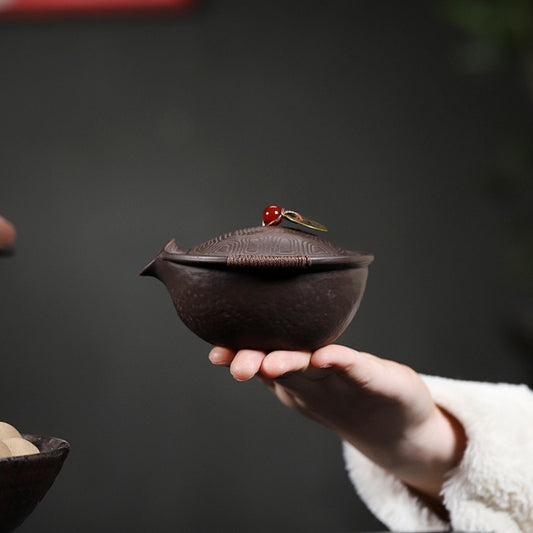Gaiwan: The Elegant Symbol of Chinese Tea Culture
I. Historical Roots: From Imperial Courts to Folk Traditions
The gaiwan, traditionally known as the "Three-Talent Bowl" (三才碗), consists of three parts—the bowl, lid, and saucer—symbolizing the harmony of heaven, earth, and humanity. Its design traces back to the Tang Dynasty’s "tea cup and saucer" (茶盏托), with similar combinations appearing in Song Dynasty literati tea gatherings. By the Ming and Qing dynasties, the gaiwan became a staple in imperial tea culture. During the Kangxi reign, Jingdezhen kilns produced exquisite blue-and-white gaiwans with luminous glazes and intricate patterns, setting an aesthetic standard. The Qianlong Emperor even used gaiwans as his daily tea vessel, and surviving imperial pieces—decorated with cloisonné and famille rose enamels—stand as masterpieces of porcelain craftsmanship.
II. Functional Elegance: The Versatility of a Universal Teaware
The gaiwan’s design is a marvel of tea-brewing efficiency:
l The Lid as Control: Adjusting the lid’s angle regulates infusion speed, while skimming the surface removes foam, acting as a built-in filter.
l The Bowl as Stage: Its wide opening allows tea leaves to unfurl fully, and the porcelain body preserves pure flavor without absorbing aromas.
l The Saucer as Etiquette: It prevents burns and protects surfaces from spills, elevating the act of drinking tea into a graceful ritual.
Brewing Techniques:
l Beginners may start with the "pinch grip" (thumb and middle finger on the rim, index finger on the lid knob), while advanced users prefer the "three-finger method" (holding the saucer). A steady, gentle hand ensures tea is never over-steeped.
III. Tea Pairings: A Vessel for Every Leaf
The gaiwan’s neutral porcelain makes it ideal for evaluating tea, especially these varieties:
1. Aromatic Oolongs (e.g., Tieguanyin, Taiwanese High-Mountain Oolong)
l Captures floral notes; quick infusions avoid bitterness.
2. Delicate Green Teas (e.g., Longjing, Biluochun)
l The open design dissipates heat; glass gaiwans showcase dancing leaves (use lower temps, ~85°C).
3. Raw Pu’er (Sheng Cha)
l Precise pour-offs highlight terroir and aging potential.
4. White Teas (e.g., Baihao Yinzhen, White Peony)
l Traps silvery buds’ honeyed fragrance layer by layer.
5. Black Teas (e.g., Lapsang Souchong, Keemun)
l Porcelain prevents sourness; brisk brewing enhances natural sweetness.
Less Suitable For:
l Aged Ripe Pu’er (Shou Cha) or Dark Teas (better with Yixing clay’s heat retention).
l Milk Teas (small capacity; practicality favors larger pots).
IV. A Living Legacy: From Scholar’s Study to Modern Tea Table
Today, the gaiwan transcends utility:
l Centerpiece of Tea Ceremony: A cobalt-patterned gaiwan against a minimalist setup channels timeless elegance.
l Cultural Icon: Lu Xun, in his essay On Tea, wrote, “To drink fine tea, one must use a gaiwan”—a testament to its role in preserving tea’s essence.
l Artisan Revival: Contemporary potters refine classic forms (e.g., ergonomic "Yashou" curves) or innovate with jade-like porcelain, bridging tradition and modernity.
Epilogue:
To cradle a gaiwan is to hold a microcosm of balance. Whether in Chaozhou’s "Lord Guan’s Patrol" pouring technique or Chengdu’s teahouse ritual of lifting the lid to savor the aroma, this humble trio embodies the soul of Chinese tea—where simplicity and depth unite in a single, mindful sip.

![Ancient Celadon Style Ceramic [Jinxiu Heshan] Sancai Gaiwan Set 190ml](http://yiqinteahouse.com/cdn/shop/files/8abb8ec197b0c99bad32dad0e8a3a2b2.jpg?v=1762467159&width=533)
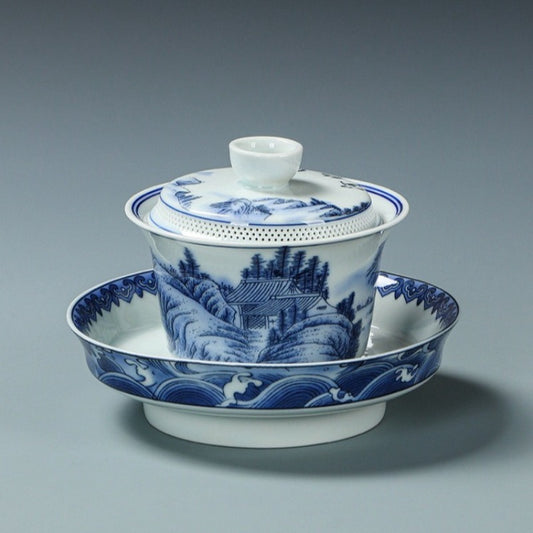
![Ancient Celadon Style Ceramic [Qianli Jiangshan] Sancai Gaiwan Set 190ml](http://yiqinteahouse.com/cdn/shop/files/e54291108da79f937b146b924e3cb4ed.jpg?v=1762466903&width=533)
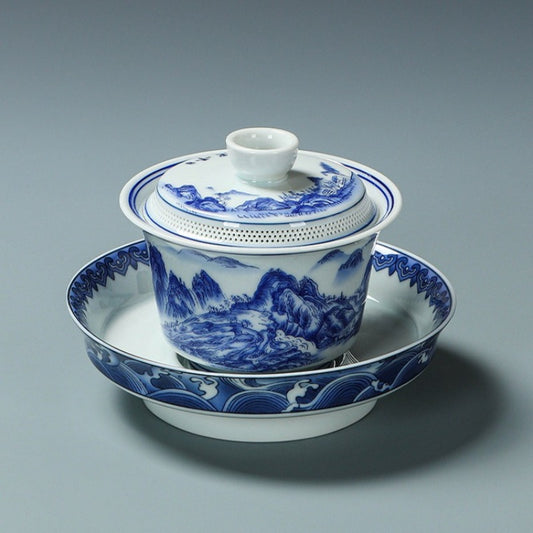
![Mutton Fat Ice Jade White Porcelain Tea Gift Set [Mountain]](http://yiqinteahouse.com/cdn/shop/files/f60ce1e32e36103185e5ba8ac8a91952.jpg?v=1751785122&width=533)
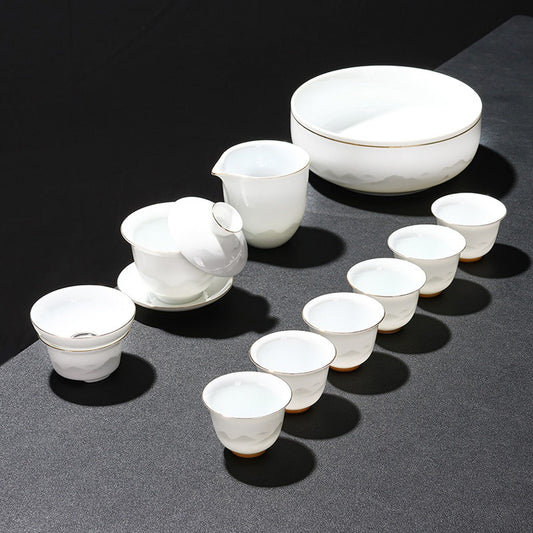
![Master Handmade Yixing Zisha Gaiwan [Hundred Blessings] (Huangjin Duan Ni - 150ml)](http://yiqinteahouse.com/cdn/shop/files/eb968099ca3bc30a5c3f6b3213cf8c85.jpg?v=1747789464&width=533)
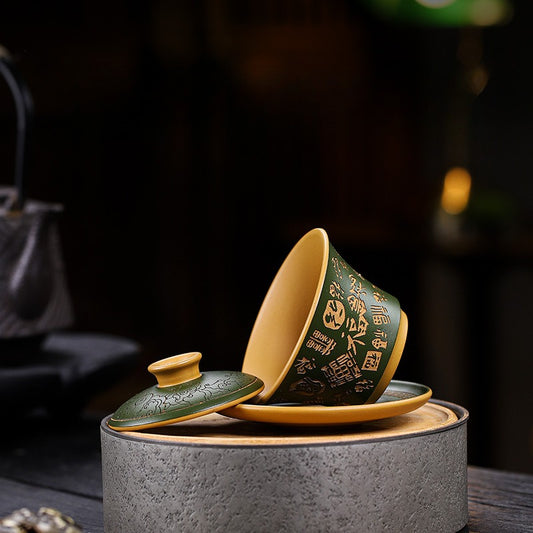
![Firewood Fired Hand-painted Floral Ceramic Gaiwan / Tea Cup Set [Happiness] - YIQIN TEA HOUSE | yiqinteahouse.com | ceramic teapot, gaiwan, tea cup, teaware, teaware set](http://yiqinteahouse.com/cdn/shop/files/d06e0f86af258bfff10c2dae032b01be.jpg?v=1725098380&width=533)
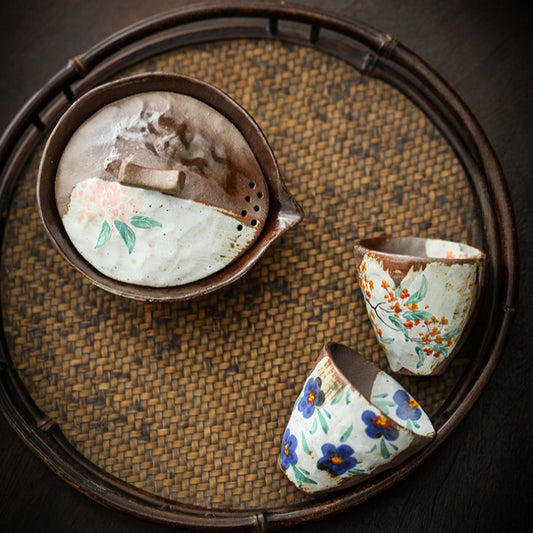

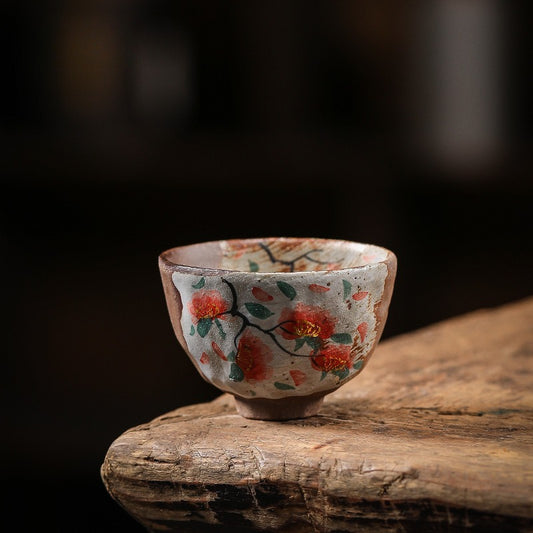

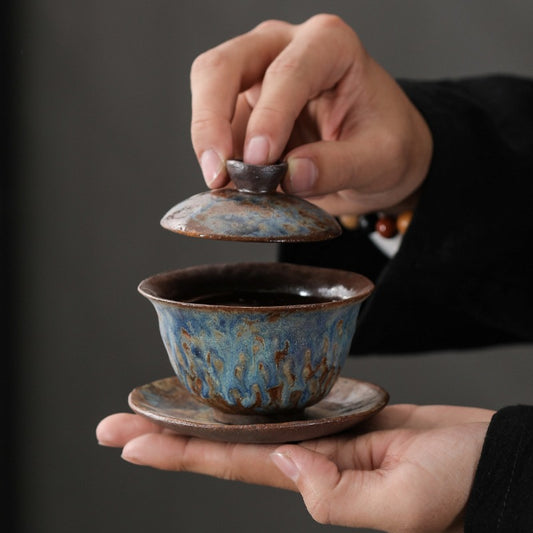
![Kiln Change Firewood Firing [Yan Kuang] Hand-Grab Pot / Tea Tray Set - YIQIN TEA HOUSE | yiqinteahouse.com | ceramic teapot, gaiwan, tea tray, teapot, teaware](http://yiqinteahouse.com/cdn/shop/files/7d56d1d1287832f8ad0852e2f9574804.jpg?v=1724736888&width=533)
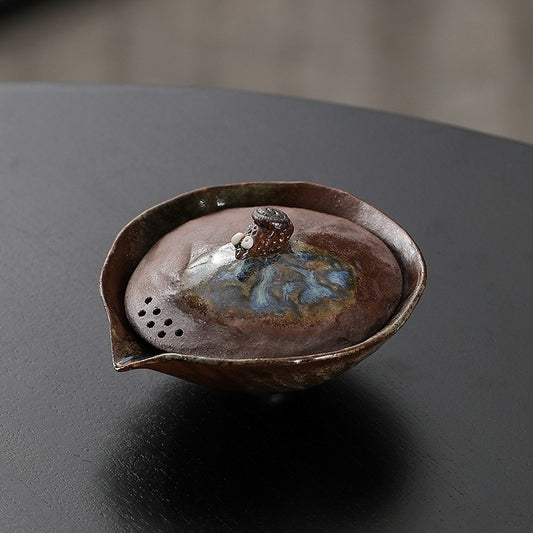
![Jindezhen Gu Ru Ice Crackle Ceramic Tea Set [Zhi Ci Qinglu] - YIQIN TEA HOUSE | yiqinteahouse.com | ceramic teapot, fair cup, gaiwan, strainer, tea cup, teaware, teaware set, zhi ci qinglu](http://yiqinteahouse.com/cdn/shop/files/jindezhen-gu-ru-ice-crackle-ceramic-tea-set-zhi-ci-qinglu-yiqin-tea-house-yiqinteahouse-com-1.jpg?v=1723263086&width=533)
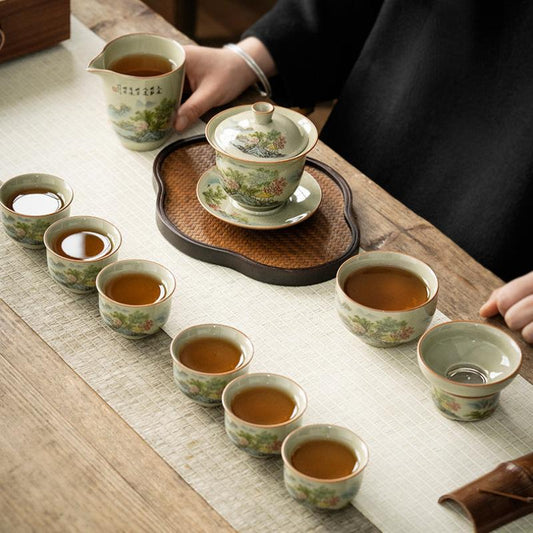
![Jindezhen Gu Ru Ice Crackle Ceramic Tea Set [Jiangshan Keran] - YIQIN TEA HOUSE | yiqinteahouse.com | ceramic teapot, fair cup, gaiwan, jiangshan keran, strainer, tea cup, teaware, teaware set](http://yiqinteahouse.com/cdn/shop/files/jindezhen-gu-ru-ice-crackle-ceramic-tea-set-jiangshan-keran-yiqin-tea-house-yiqinteahouse-com-1.jpg?v=1723263107&width=533)
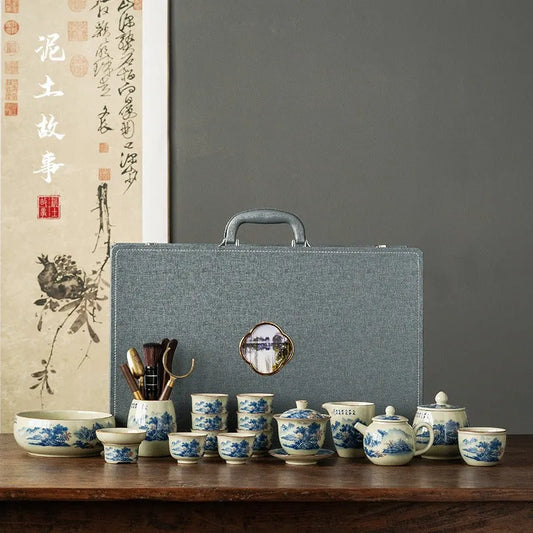
![Jindezhen Ice Crackle Sancai Gaiwan [Jiangshan Ke Ran Series - Straw Hat] 130ml - YIQIN TEA HOUSE | yiqinteahouse.com | gaiwan, jiangshan keran, teaware](http://yiqinteahouse.com/cdn/shop/files/jindezhen-ice-crackle-sancai-gaiwan-jiangshan-ke-ran-series-straw-hat-130ml-yiqin-tea-house-yiqinteahouse-com-1.png?v=1723794071&width=533)
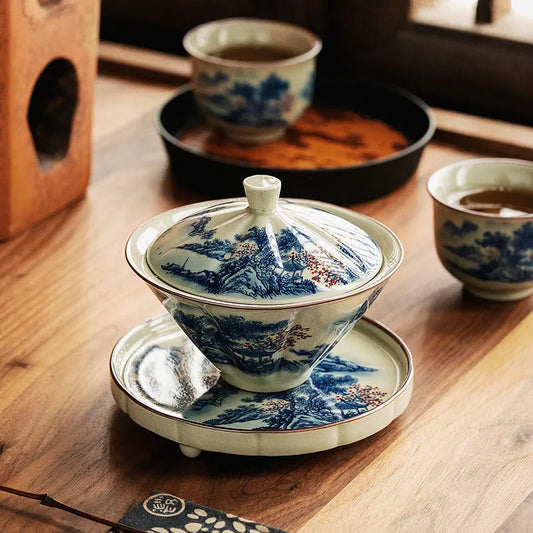
![Jindezhen Ice Crackle Sancai Gaiwan [Zhi Ci Qinglu Series - Straw Hat] 130ml - YIQIN TEA HOUSE | yiqinteahouse.com | gaiwan, teaware, zhi ci qinglu](http://yiqinteahouse.com/cdn/shop/files/jindezhen-ice-crackle-sancai-gaiwan-zhi-ci-qinglu-series-straw-hat-130ml-yiqin-tea-house-yiqinteahouse-com-1.jpg?v=1723794063&width=533)
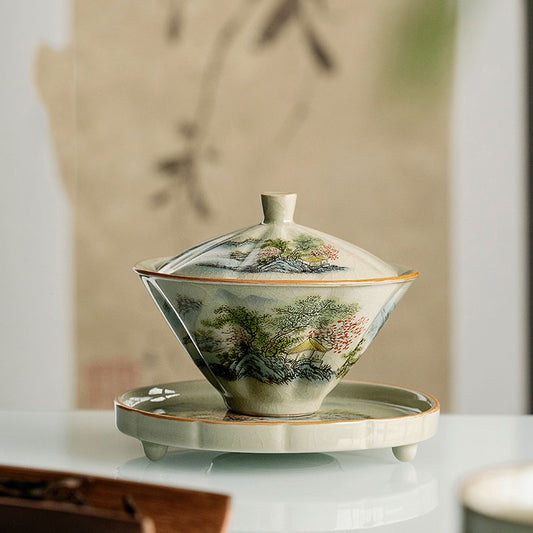
![Jindezhen Ice Crackle Ceramic Sancai Gaiwan [Jiangshan Ke Ran Series - Jiangjun] 165ml - YIQIN TEA HOUSE | yiqinteahouse.com | gaiwan, jiangshan keran, teaware](http://yiqinteahouse.com/cdn/shop/files/jindezhen-ice-crackle-ceramic-sancai-gaiwan-jiangshan-ke-ran-series-jiangjun-165ml-yiqin-tea-house-yiqinteahouse-com-1.jpg?v=1723794043&width=533)
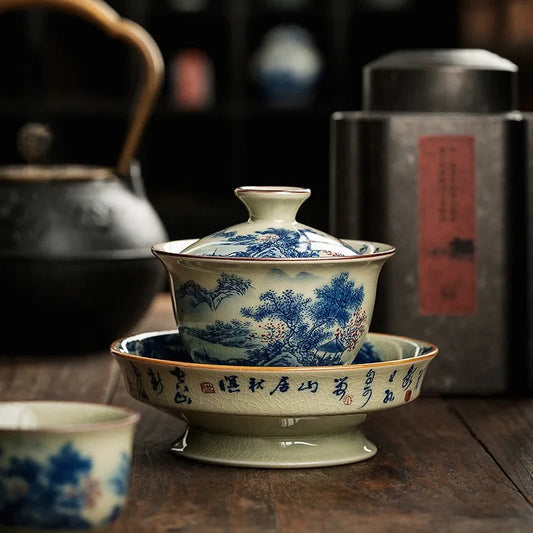
![Jindezhen Ice Crackle Sancai Gaiwan [Zhi Ci Qinglu Series - Jiangjun] 165ml - YIQIN TEA HOUSE | yiqinteahouse.com | gaiwan, teaware, zhi ci qinglu](http://yiqinteahouse.com/cdn/shop/files/jindezhen-ice-crackle-sancai-gaiwan-zhi-ci-qinglu-series-jiangjun-165ml-yiqin-tea-house-yiqinteahouse-com-1.jpg?v=1723794026&width=533)
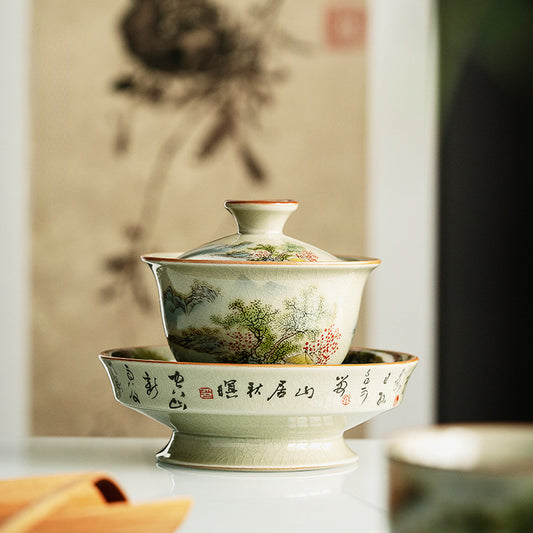

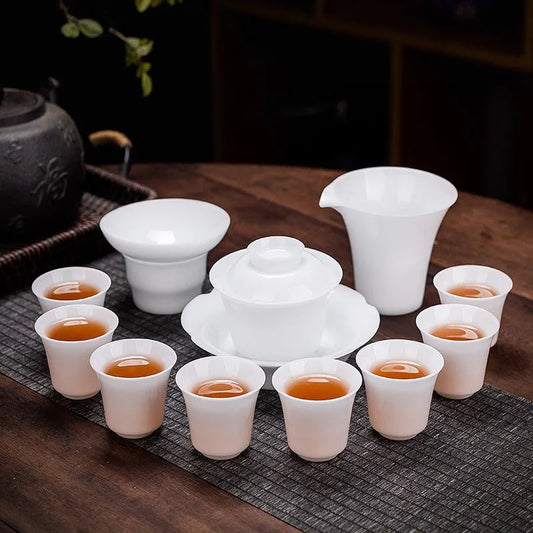
![Ceramic [Qinghua Dragon] Sancai Gaiwan 200ml - YIQIN TEA HOUSE | yiqinteahouse.com | gaiwan, teaware](http://yiqinteahouse.com/cdn/shop/files/ceramic-qinghua-dragon-sancai-gaiwan-200ml-yiqin-tea-house-yiqinteahouse-com-1.jpg?v=1723262824&width=533)
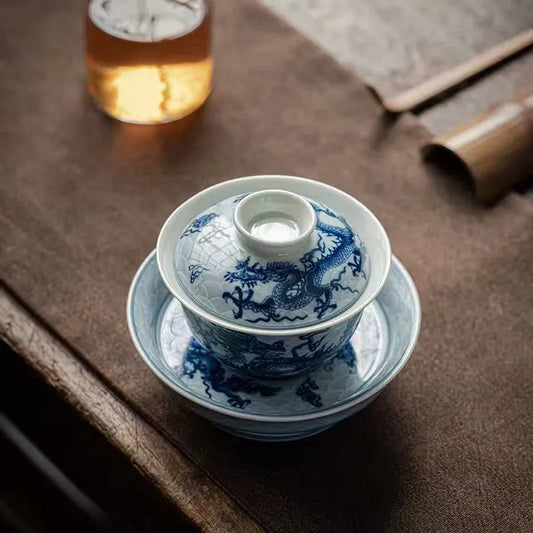
![Handmade Aged Ceramic Clay [Qinghua] Sancai Gaiwan 210ml - YIQIN TEA HOUSE | yiqinteahouse.com | gaiwan, teaware](http://yiqinteahouse.com/cdn/shop/files/handmade-aged-ceramic-clay-qinghua-sancai-gaiwan-210ml-yiqin-tea-house-yiqinteahouse-com-1.jpg?v=1723262811&width=533)
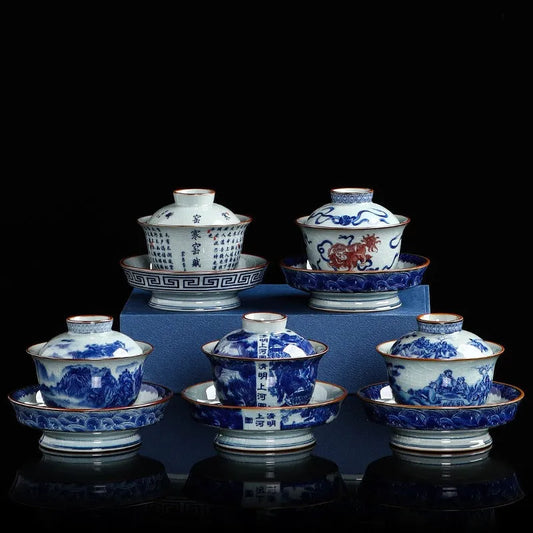

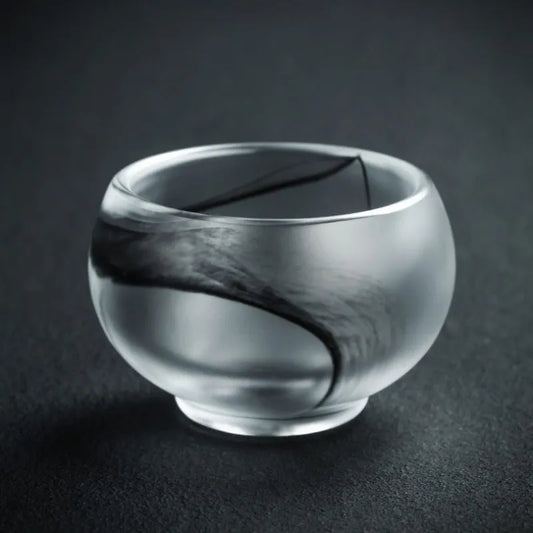
![Handmade Yixing Zisha Hand-Grab Pot / Teapot [Wealthy] (Dahongpao - 150ml) - YIQIN TEA HOUSE | yiqinteahouse.com | gaiwan, new arrival, teapot, teaware, zisha teapot](http://yiqinteahouse.com/cdn/shop/files/handmade-yixing-zisha-gaiwanteapot-wealthy-dahongpao-150ml-yiqin-tea-house-yiqinteahouse-com-1.jpg?v=1724350400&width=533)
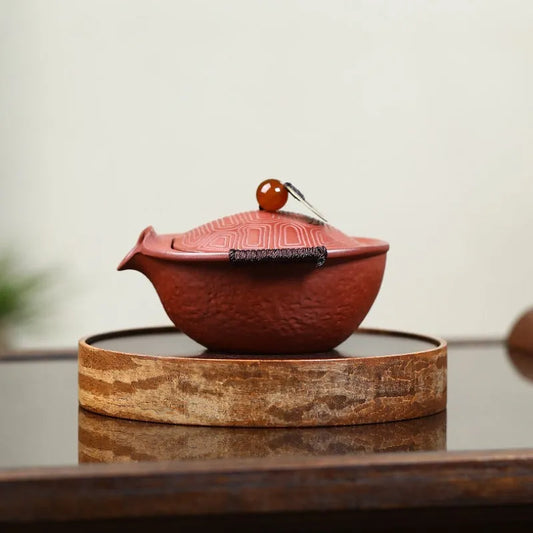
![Handmade Ceramic [Qinghua Dou Cai] Gaiwan 175ml - YIQIN TEA HOUSE | yiqinteahouse.com | gaiwan, teaware](http://yiqinteahouse.com/cdn/shop/files/handmade-ceramic-qinghua-dou-cai-gaiwan-175ml-yiqin-tea-house-yiqinteahouse-com-1.jpg?v=1723261345&width=533)


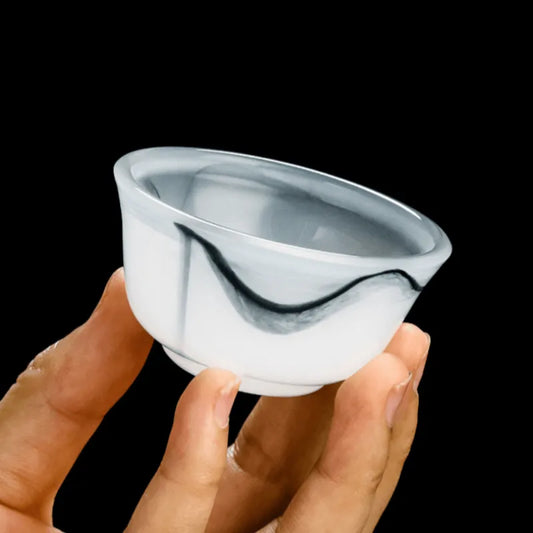
![Handmade Yixing Zisha Gaiwan [Spring of Jiangnan] (Huangjin Duan Ni - 150ml) - YIQIN TEA HOUSE | yiqinteahouse.com | gaiwan, teaware](http://yiqinteahouse.com/cdn/shop/files/handmade-yixing-zisha-gaiwan-spring-of-jiangnan-huangjin-duan-ni-150ml-yiqin-tea-house-yiqinteahouse-com-1.jpg?v=1723260233&width=533)
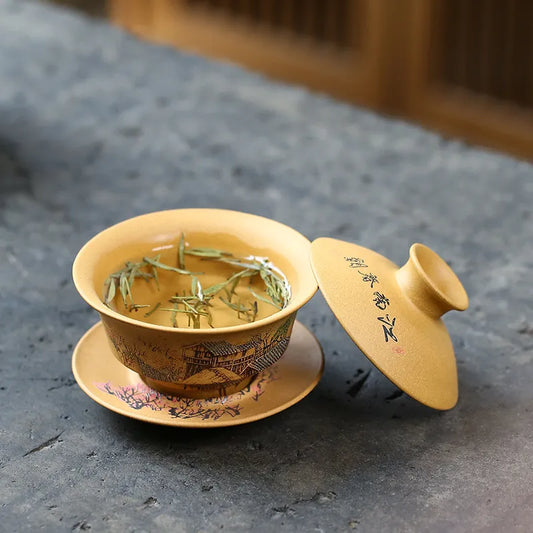
![Handmade Yixing Zisha Hand-Grab Pot / Teapot [Lotus] (Zi Ni/Jiang Po Ni - 170ml) - YIQIN TEA HOUSE | yiqinteahouse.com | gaiwan, new arrival, teapot, teaware, zisha teapot](http://yiqinteahouse.com/cdn/shop/products/handmade-yixing-zisha-gaiwan-lotus-zi-nijiang-po-ni-170ml-yiqin-tea-house-yiqinteahouse-com-1.png?v=1723259597&width=533)
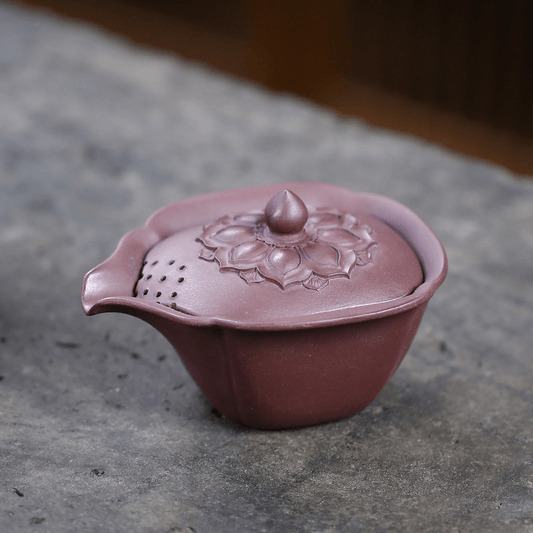
![Yixing Zisha Hand-Grab Pot / Teapot [Wealthy] (Zi Ni - 300ml) - YIQIN TEA HOUSE | yiqinteahouse.com | 200-300ml, gaiwan, new arrival, teapot, teaware, zisha teapot](http://yiqinteahouse.com/cdn/shop/products/yixing-zisha-gaiwan-wealthy-zi-ni-300ml-yiqin-tea-house-yiqinteahouse-com-1.png?v=1723259312&width=533)
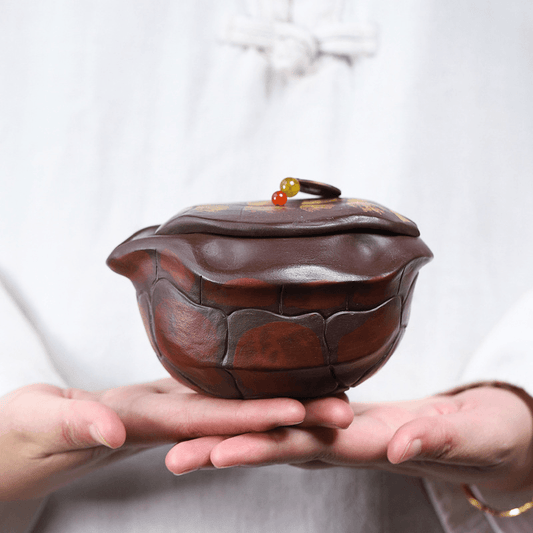
![Handmade Yixing Zisha Hand-Grab Pot / Teapot [Wealthy] (Zhu Ni - 130ml) - YIQIN TEA HOUSE | yiqinteahouse.com | <200ml, gaiwan, new arrival, teapot, teaware, zisha teapot](http://yiqinteahouse.com/cdn/shop/files/handmade-yixing-zisha-gaiwanteapot-wealthy-zhu-ni-130ml-yiqin-tea-house-yiqinteahouse-com-1.jpg?v=1724349824&width=533)
